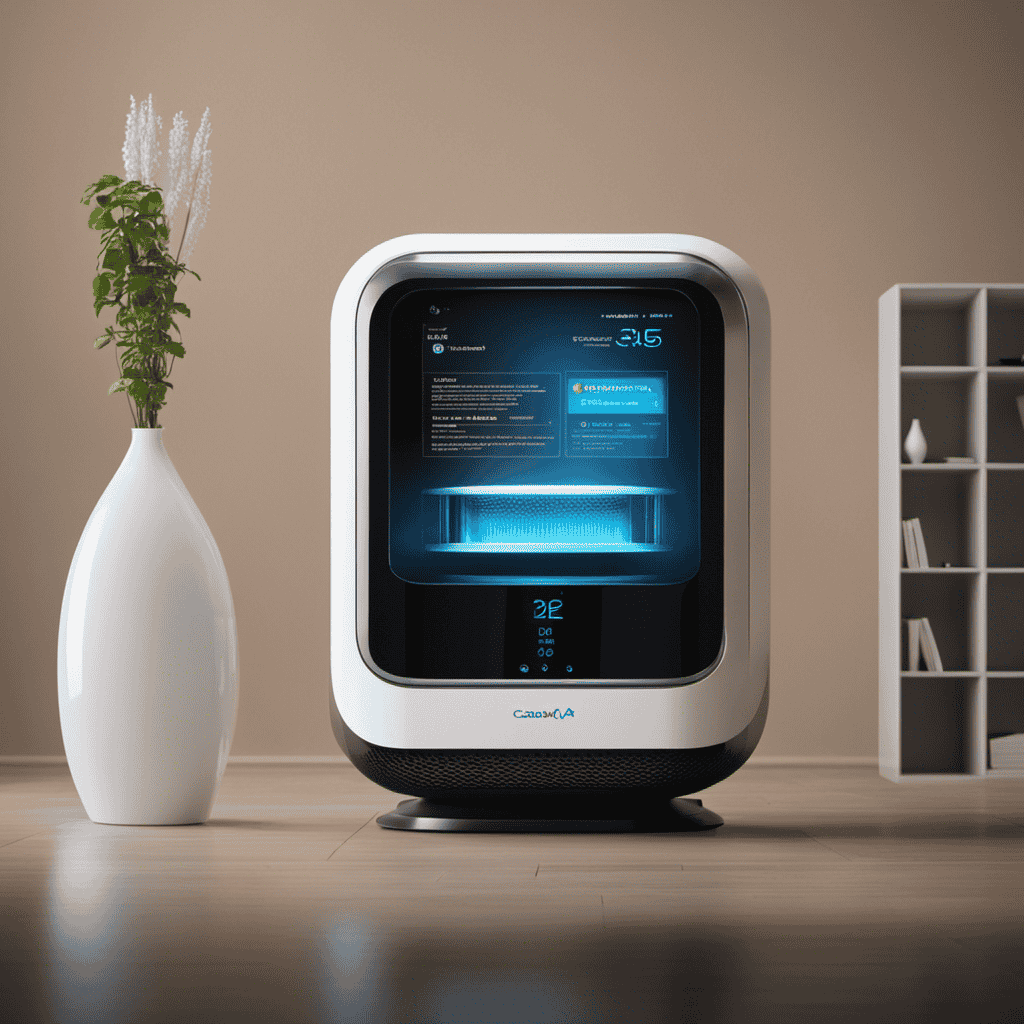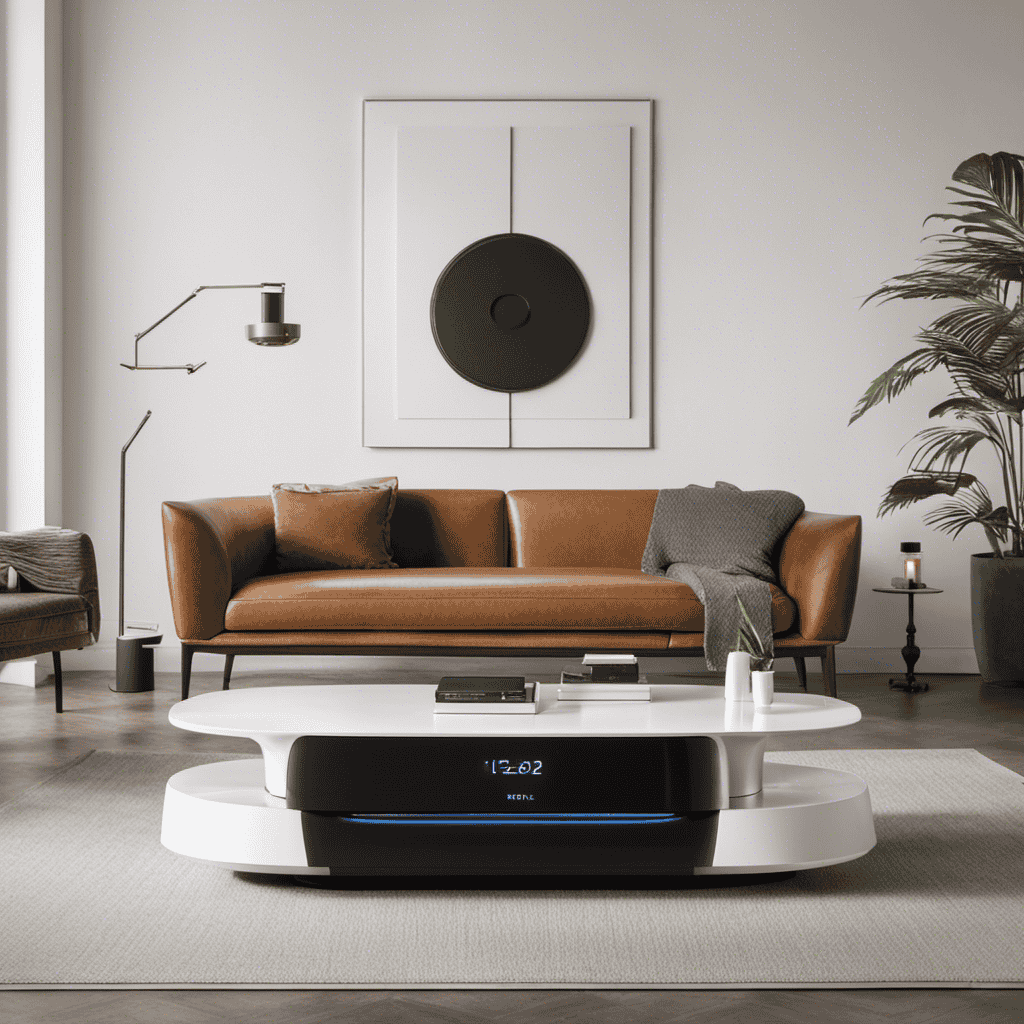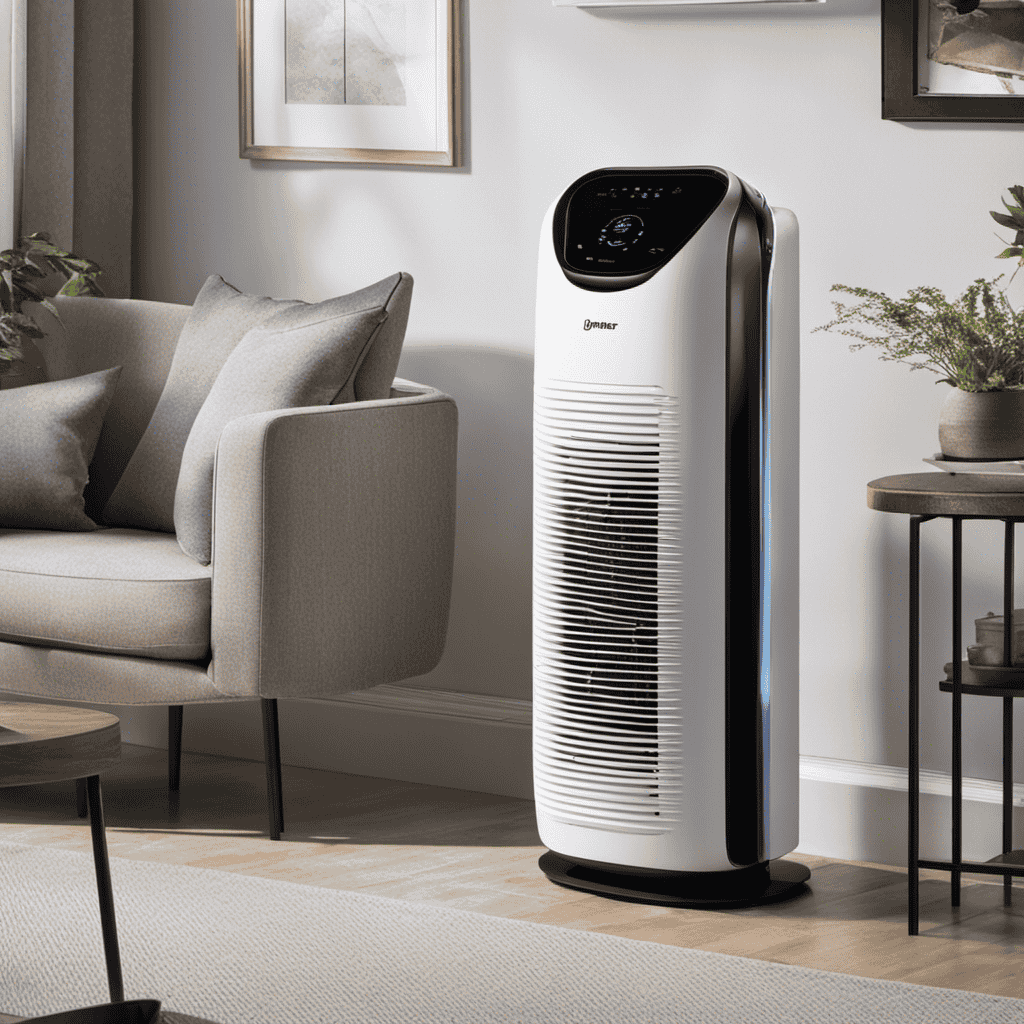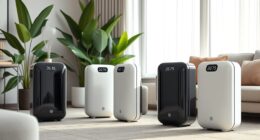When I delved into the realm of air purifiers, I was overwhelmed by the abundance of technical terminology. The acronym ‘CADR’ seemed like an enigmatic cipher hovering over me.
What does it mean? How does it affect the performance of an air purifier? With a quest for answers, I delved into the depths of CADR, unlocking its secrets along the way.
Join me on this enlightening journey as we unravel the meaning and significance of CADR in air purifiers.
Key Takeaways
- CADR stands for Clean Air Delivery Rate and measures the efficiency of an air purifier in removing pollutants.
- Higher CADR means faster removal of pollutants and improved air quality, reducing allergy symptoms and respiratory issues.
- CADR is measured in cubic feet per minute (CFM) and is determined through testing in a controlled environment with specific pollutants.
- Factors such as room size, obstacles, and regular filter maintenance affect CADR efficiency, so consider these when choosing the right air purifier for your needs.
Understanding CADR
The CADR (Clean Air Delivery Rate) indicates how efficiently an air purifier can remove pollutants from the air. Understanding CADR is crucial when choosing an air purifier, as it provides a standardized measurement of its effectiveness.
CADR is measured in cubic feet per minute (CFM) and represents the volume of clean air that an air purifier can deliver in a specific amount of time. This measurement is determined by testing the air purifier in a controlled environment with a specific set of pollutants. The test measures the reduction of three types of pollutants: smoke, dust, and pollen.
By understanding CADR and its measurement techniques, consumers can compare different air purifiers and choose one that best suits their needs.
Now that we understand CADR, let’s explore the importance of CADR in air purifiers.
Importance of CADR in Air Purifiers
Understanding the importance of CADR in air purifiers is crucial for improving indoor air quality. CADR, or Clean Air Delivery Rate, measures the efficiency of an air purifier in removing pollutants from the air. Here are three reasons why CADR is important:
-
Confidence: CADR provides a standardized measurement that allows consumers to compare the effectiveness of different air purifiers. Knowing the CADR rating gives you confidence that the device can effectively remove pollutants from your indoor environment.
-
Health benefits: A higher CADR means that the air purifier can remove pollutants faster, improving the air quality in your home. Breathing cleaner air can have significant health benefits, such as reducing allergy symptoms and respiratory issues.
-
Peace of mind: CADR standards ensure that air purifiers meet specific requirements for performance and efficiency. By choosing a purifier with a high CADR, you can have peace of mind knowing that it will effectively remove pollutants and improve the air quality in your home.
Understanding the importance of CADR sets the stage for learning how CADR is measured and the different techniques and standards used in the process.
How CADR Is Measured
To measure CADR, you’ll need to consider the efficiency of an air purifier in removing pollutants from the air. CADR, or Clean Air Delivery Rate, is a standard used to gauge the effectiveness of air purifiers in improving indoor air quality. The measurement is based on the volume of clean air produced by the purifier per unit of time.
CADR standards are set by the Association of Home Appliance Manufacturers (AHAM). The higher the CADR rating, the more effective the air purifier is at removing pollutants such as dust, pollen, and smoke from the air.
When shopping for an air purifier, it is important to look for a high CADR rating to ensure that it can effectively clean the air in your space.
Factors Affecting CADR
When considering factors that affect CADR, you should be aware that the size of the room and the presence of obstacles can impact the effectiveness of an air purifier. Here are three key factors that can affect the efficiency of CADR and the role it plays in improving air quality:
-
Room size: The size of the room directly affects the CADR rating. A larger room requires a higher CADR to effectively clean the air. If the CADR is too low for the room size, the air purifier may not be able to effectively remove pollutants, resulting in lower air quality.
-
Obstacles: Objects in the room, such as furniture or curtains, can obstruct the airflow and reduce the efficiency of CADR. It is important to place the air purifier in an area with minimal obstructions to ensure optimal air cleaning.
-
Filter maintenance: Regularly cleaning and replacing the air purifier’s filters is crucial for maintaining high CADR efficiency. Clogged filters can hinder airflow and reduce the effectiveness of the air purifier in removing pollutants.
Understanding these factors will help you make informed decisions when choosing and positioning an air purifier to improve the air quality in your space.
Choosing the Right CADR for Your Needs
Consider your specific air quality needs and compare them to the CADR ratings of different air purifiers to ensure you choose the right one for your space.
When it comes to air purifier efficiency, the CADR (Clean Air Delivery Rate) is an important factor to consider. CADR is a measurement that indicates how effectively an air purifier can remove pollutants from the air. It measures the volume of clean air that an air purifier can deliver per minute.
The higher the CADR rating, the more efficient the air purifier is in removing pollutants. However, it is also important to consider the price of the air purifier in relation to its CADR rating. A higher CADR rating usually comes with a higher price tag.
Therefore, it is important to find a balance between air purifier efficiency and cost when making your decision.
Frequently Asked Questions
Can CADR Be Used as the Sole Factor for Determining the Effectiveness of an Air Purifier?
CAUTION: The CADR measurement alone should not be used to determine air purifier effectiveness. Other factors, like filter type, room size, and indoor air quality, must also be considered for accurate assessment.
Are There Any Potential Health Risks Associated With Air Purifiers That Have a High Cadr?
Potential side effects from long term exposure to air purifiers with a high CADR include dryness and irritation of the eyes, nose, and throat. It is important to consider other factors such as filtration efficiency and maintenance when determining effectiveness.
Can CADR Be Improved or Increased With the Use of Additional Filters or Technologies?
Improving the performance of an air purifier can be done by incorporating advanced technologies and using additional filters. These measures can increase the CADR (Clean Air Delivery Rate) and enhance the overall efficiency of the device.
Is There a Minimum CADR Requirement for Air Purifiers to Effectively Clean the Air in a Specific Room Size?
There are CADR requirements for different room sizes to effectively clean the air. Besides CADR, factors like filtration technology, air changes per hour, and room layout should also be considered for air purifier effectiveness.
How Often Should the Filters Be Replaced in an Air Purifier to Maintain Its CADR Performance?
I replace air purifier filters regularly to maintain its CADR performance. Regular filter replacements are important for optimal air purification.
Conclusion
In conclusion, CADR, or Clean Air Delivery Rate, is a crucial factor to consider when choosing an air purifier.
Symbolically, CADR can be seen as the knight in shining armor, protecting us from the harmful pollutants in the air.
It is a technical measurement that determines the efficiency of an air purifier in removing pollutants such as dust, smoke, and pollen.
By understanding CADR and selecting the right value for your needs, you can ensure that your air purifier will effectively clean the air in your space, creating a healthier environment for you and your loved ones.










